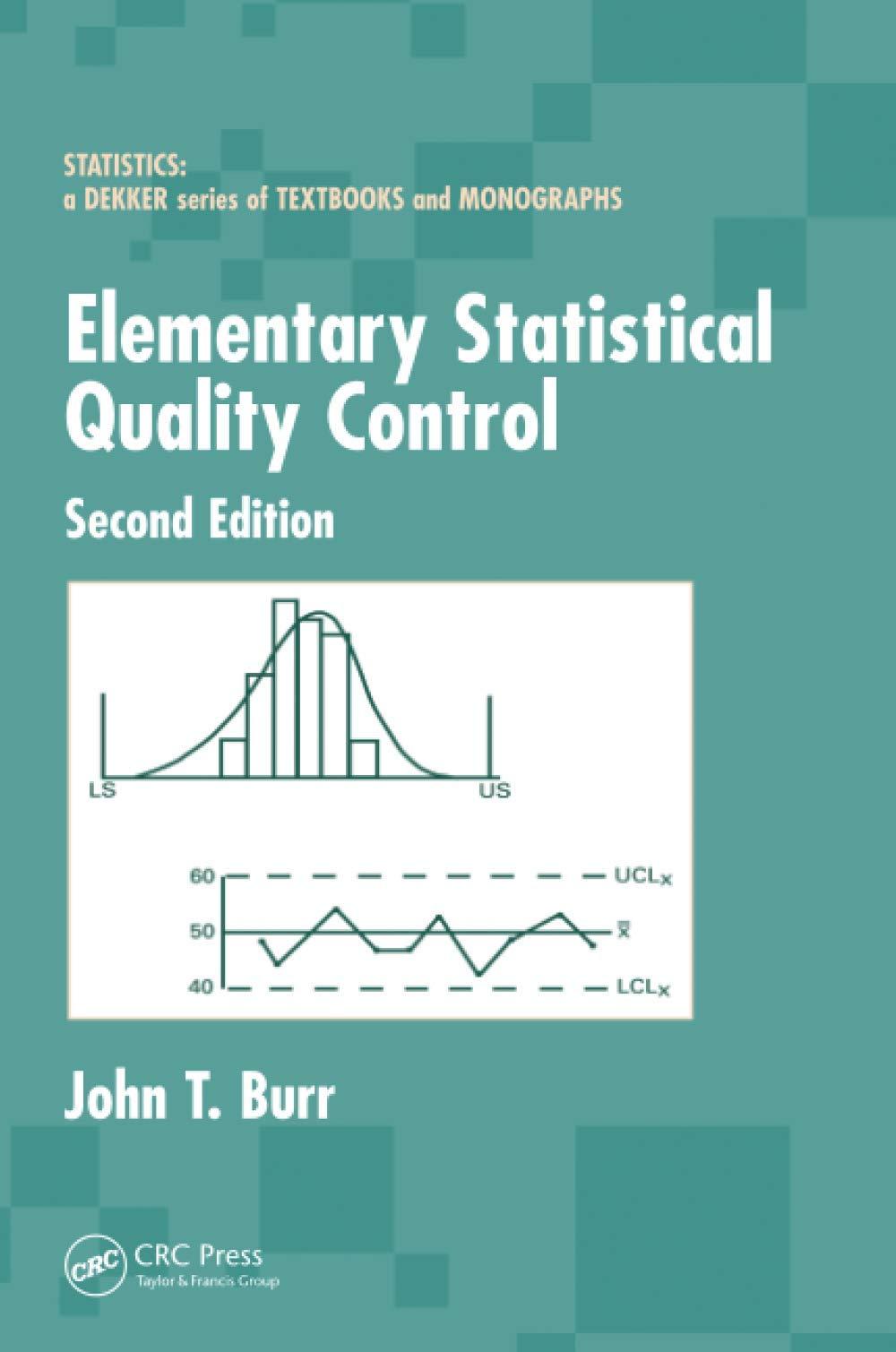8.3. This problem involves measurements on the outside diameter at the base of the stem of an...
Question:
8.3. This problem involves measurements on the outside diameter at the base of the stem of an exhaust-valve bridge.
Specifications were 1.1550–1.1560 in. All pieces from the machining operation were measured and samples of n¼5 in succession were formed. Three vendors were supplying forgings.
There were constant tool changes and tool resets. As a result of these changes, tool life was short and pieces were often out of specifications. It was the general opinion that differences among vendors were responsible for pieces being out of specifications. However, a study was made on each vendor’s pieces and there was no significant difference in the trends of any of them. A chart was placed on the machine and the operator instructed as to where to start a run and at what level to reset. The chart indicated that approximately 75 pieces could be produced before resetting. By using this type of trend chart, the process was made to run without nonconforming pieces and 100% inspection was reduced to five pieces every 30 min. Tool life was considerably increased.
The data given below were in 0.0001 in above 1.1550 in with n¼5.
Sample 1 2 3 4 5 6 7 8 9 10 x-bar 3.0 4.0 4.4 4.6 5.0 5.6 6.8 7.0 7.6 7.8 R 2 2 2 2 2 2 1 2 1 2 Sample 11 12 13 14 15 16 17 18 19 20 x-bar 8.0 8.6 9.0 1.8 2.4 2.6 2.8 3.0 3.4 3.6 R 2 1 2 2 1 2 1 2 1 2
(a) Plot the points for x-bar and R. Check the R chart for control. Estimate s if justified.
(b) Draw by eye the trend lines for m and show on the chart the minimum and maximum safe process averages. Also draw slanting control limits around the trend lines.
(c) Were the runs started and ended at about the right levels? Was the tool wear running in control?
Step by Step Answer:







